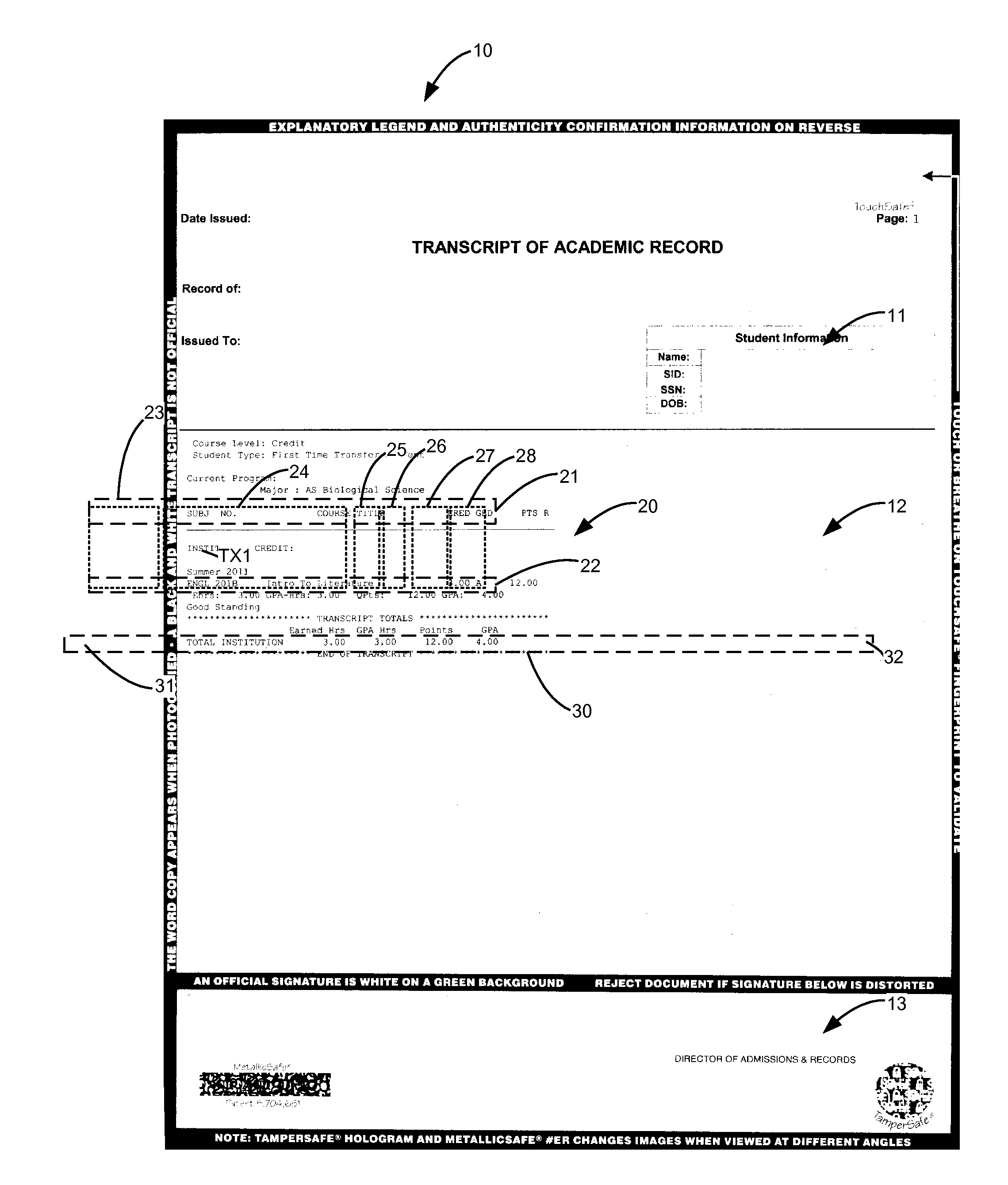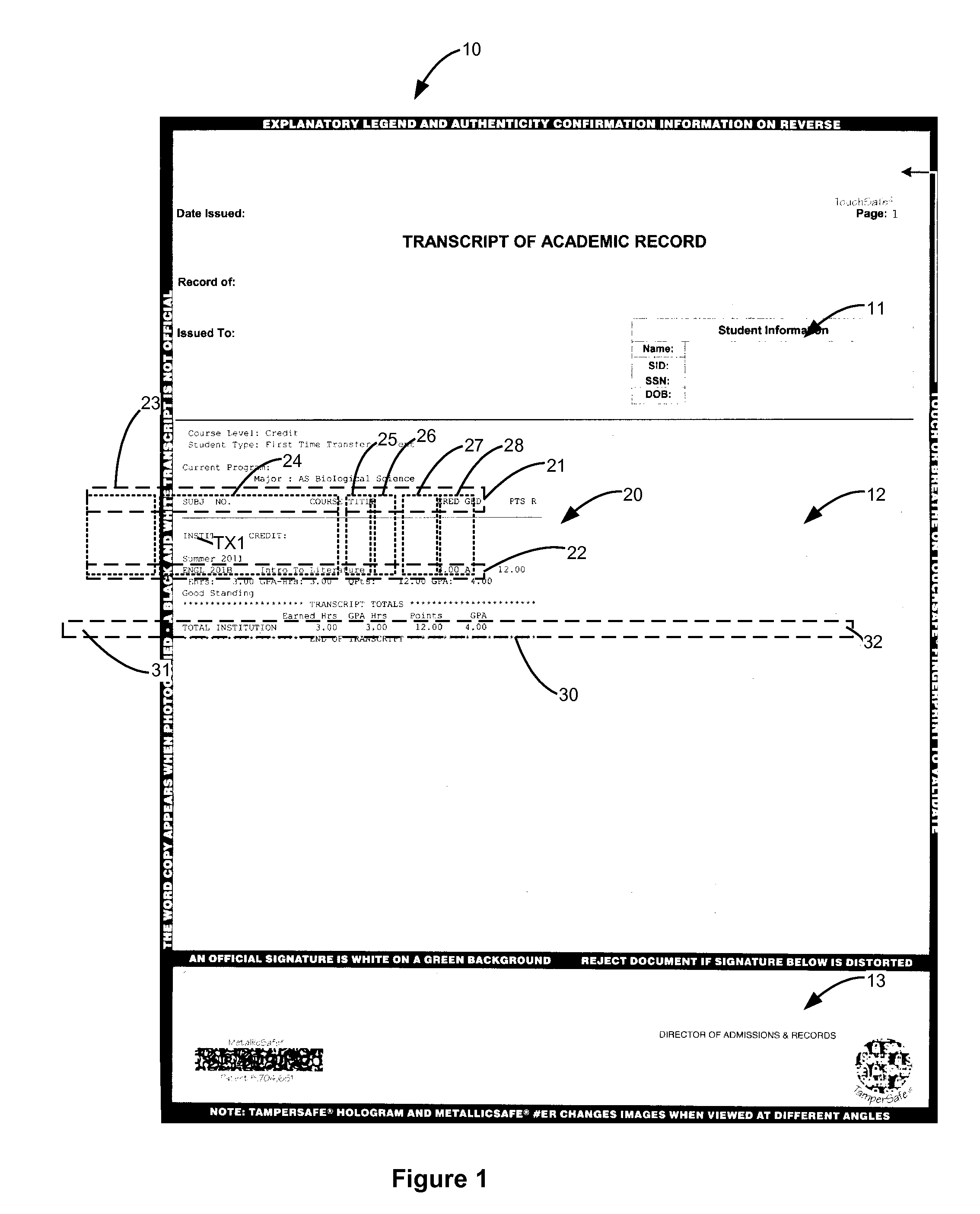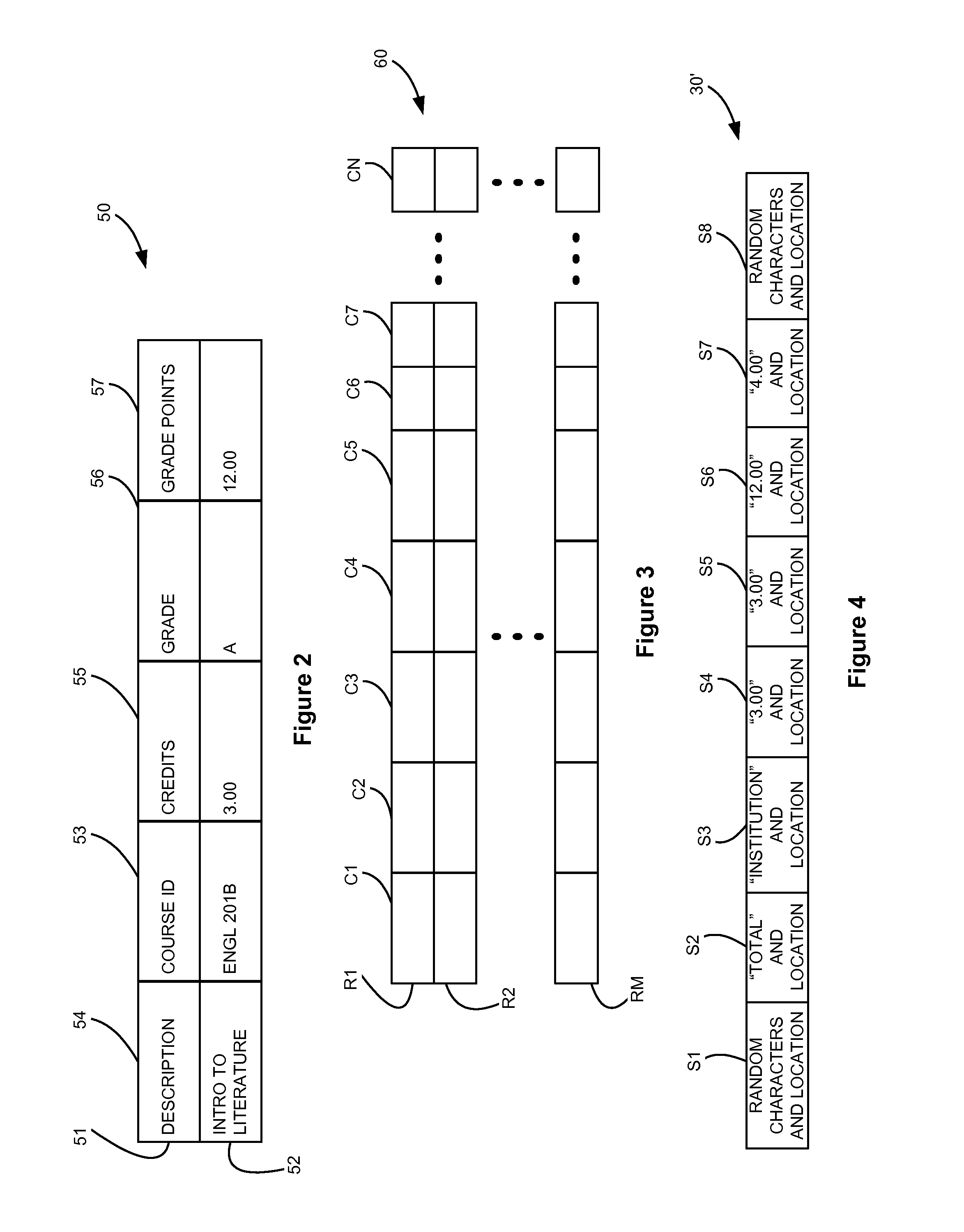Methods for Automatic Structured Extraction of Data in OCR Documents Having Tabular Data
a structured extraction and data technology, applied in the field of automatic structured extraction of data in ocr documents having tabular data, can solve problems such as incompatibility or inaccurate ocr, interference with text recognition, and problems such as problems such as problems,
- Summary
- Abstract
- Description
- Claims
- Application Information
AI Technical Summary
Benefits of technology
Problems solved by technology
Method used
Image
Examples
example 1
[0042]
AB8OA010.91B100.30.7
[0043]In this example OCR error matrix, the characters A and B in the first column to are compared to the characters A, B 8 and O in the top row. Because an A to A comparison has no error, its value is zero. Similarly, for the B to B comparison, the error probability is 0. The comparison of A to B, or B to A, is not a common error and is heavily penalized with a value of 1, indicating complete lack of similarity. In the A to 8 comparison, this error is again not common but is more frequent than the A to B comparison and, as such, carries a penalty of 0.9. In the A to capital O comparison, this error is rare and carries a penalty value of 1. In the B to 8 comparison, this is fairly common error and garners an error value of 0.3. For the B to capital O comparison, this again is not common but does occur enough that its error penalty is 0.7. The OCR error matrix is created to compare to each character to another character within the general and specific charac...
example 2
[0051]“Total / amount”, “Total / quantity”, “Quantity / ordered”.
[0052]In Example 2, a correct identification of the column content is only possible if multi-line headers are recognized. Without multiline header detection, the header strings would appear to be “Total”, “Total”, and “Quantity” instead of the proper headers “Total amount”, “Total quantity” and “Quantity ordered”. By merging across lines, the correct meaning and, thus, the correct mapping into a table for extraction can be determined.
[0053]The information returned by table header detection module 160 contains a score based on (i) the reliability of the header columns, (ii) the column center positions, (iii) the potential column boundaries (based on textual structure below the header in the content cells), (iv) the amount of separators indicated by page split detector module 170 for multi-stacked tables, and (v) the amount of headers missing from a header line (including a prediction as to where the missing headers could be f...
example 3
[0056]
Line 1Line 2Line 3Line 11.00.220.22Line 2.221.0.88Line 3.22.991.0
[0057]Lines 2 and 3 differ only from one another by one character while line 1 differs from lines 2 and 3 by 14 characters and has a different format pattern, leading to a low similarity percentage. Lines 2 and 3 would be matched. Using a predetermined similarity threshold value, for example, everything above 75 percent is consider to be same, line similarity exceeding this threshold would be clustered. One algorithm to accomplish this is simple: calculate the similarity between all possible line pairs and determine what similarity levels shall be grouped together to create line cluster groups.
[0058]This calculation may also be performed for the page split points defined by the page split detector module 170 with multi-stacked tables. For a multi-stack table where two header lines are clustered, one header line may be eliminated. Furthermore, former observed line and label patterns stored in statistics module 130...
PUM
 Login to View More
Login to View More Abstract
Description
Claims
Application Information
 Login to View More
Login to View More - Generate Ideas
- Intellectual Property
- Life Sciences
- Materials
- Tech Scout
- Unparalleled Data Quality
- Higher Quality Content
- 60% Fewer Hallucinations
Browse by: Latest US Patents, China's latest patents, Technical Efficacy Thesaurus, Application Domain, Technology Topic, Popular Technical Reports.
© 2025 PatSnap. All rights reserved.Legal|Privacy policy|Modern Slavery Act Transparency Statement|Sitemap|About US| Contact US: help@patsnap.com



